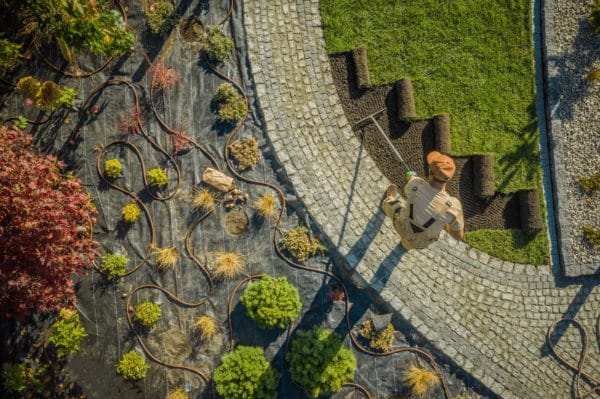If you’re looking to bid on a landscaping job as a subcontractor, you have to know where to look for landscaping work and how to create a bid. The first step is to select the right project to bid. Subcontractor bidding sites like PlanHub can help you find projects that fit your skills in your geographical area. Once you’ve selected a project to bid, you’ll review the bid documents, perform a material takeoff, get pricing from your suppliers, estimate labor, add overhead and profit, and create your proposal.
Let’s take a more detailed look at the steps how to bid landscaping jobs.
1. Choose the right project
Before quoting a landscaping project, you must know the best projects to bid for your company. Landscaping projects have a wide variety of types of work. They include planting, irrigation system installation, laying sod, pavers, stone walls, and fencing. Before you spend time putting together an estimate make sure you have the experience needed and have the proper construction business management in place to perform the landscaping work the project requires. Furthermore, you should also prepare questions a builder should ask a client. Construction bidding websites like PlanHub can help you find new construction projects that fit both your skills and location.
2. Review bid documents or make a site visit
For new construction and other commercial projects you will most likely be responding to an invitation to bid (ITB), request for qualifications (RFQ), or a request for proposals (RFP). All of these will include plans and specifications that describe and show the scope of work to be performed.
The specifications provide information on the materials to be used and how the work is to be performed. Pay special attention to Divisions 01 and 32. Division 01 provides information on qualifications, payment terms, bonding, insurance, etc. Division 32 provides specific information about the exterior improvements, including landscaping, irrigation, and fencing.
If the landscaping project is a remodel or renovation, you will probably want to make a site visit to preview the working conditions. Installation time can be greatly affected by construction challenges and conditions on the landscaping job site. You can also confirm measurements while at the site.
3. Perform a quantity takeoff
A quantity takeoff or material takeoff is a count of the materials and supplies needed to complete the specified work. It includes things like pipe, soil, plants, trees, shrubs, mulch, etc. To perform a landscaping takeoff, you’ll need to calculate the amount of soil and amendments, plants and trees, and irrigation piping you’ll need.
This can be done by reviewing the plans with the assistance of estimation software, an electronic scale, or a ruler and highlighter. You’ll measure the areas to be covered by landscaping to get the square footage, then calculate the amount of soil and plants you’ll need to cover the area. You may need to use equipment to help spread materials or sculpt the ground. Estimate the type and size of equipment you’ll need and how long it will take you to complete the work.
You can charge an equipment rental fee, whether you own the equipment or lease it. When you are finished with the takeoff, you should have a complete list of the materials, supplies, and equipment needed to complete the project.
4. Price your materials and supplies
Once you’ve completed your takeoff and have a list of materials, supplies, and equipment, it’s time to price them. Contact local nurseries and material supply houses to get pricing on each planting, tree, soil, etc. you will need to complete the project. Get the information to your suppliers as soon as possible, as it can take a while to get a quote.
5. Estimate labor
Next, you’ll use your takeoff to estimate the amount of labor it will take to perform the project. The most common and accurate way to estimate labor is to use past project data. This involves using cost and labor data you’ve gathered from previous projects to estimate how long a potential project will take.
If you don’t have past project data to help you determine how long it will take, you can use a labor guide, like RSMeans. Guides give you an estimate of how long it will take to perform specific tasks or install specific materials, as well as help with average labor rates.
6. Add overhead and profit
Company overhead includes expenses not directly related to performing project work, but that are required to keep your business running. They vary by company and are often dependent on the number of employees a company has. If you don’t know what your overhead percentage is, consult with an accountant. Profit is usually calculated as a percentage of the total cost on the landscape job.
7. Write your proposal
The sales price for the landscaping project is calculated by adding up material and supply costs, equipment rates, labor costs, overhead, and profit. It’s best to create a standardized form for all your proposals to ensure you’ve included everything. For more information about what a proposal should include, see our article “What Should a Construction Bid Look Like?”.
8. Review your proposal
Before sending your proposal it’s always a good idea to have it reviewed, math and all. Have someone check your material takeoff, as well as all math used to create the price. Also be sure to proofread your proposal and check formatting to ensure everything looks the way you want it to.
Finding the right job for you
In order to maintain a successful landscaping business, you must always be searching for new work. PlanHub helps you find landscaping bidding opportunities in your service area quickly and easily. Once you’ve found a landscape job that fits your skills, use the steps above to write a winning proposal.
If you’re a landscaping subcontractor and you want to see how PlanHub can help you expand your business, contact us today.
Commercial Landscape
What is a commercial landscape?
A commercial landscape typically refers to the business or economic environment within a specific industry or market. It encompasses various factors, including market trends, competition, regulatory conditions, consumer behavior, and economic indicators that collectively influence the performance and dynamics of businesses within that sector.
Understanding the commercial landscape is crucial for businesses to make informed decisions, develop effective strategies, and stay competitive. Businesses often analyze market conditions, industry trends, and other relevant factors to assess opportunities and risks in the commercial landscape.
The term can also be used more broadly to describe the physical surroundings and aesthetics of commercial areas or properties, such as shopping districts, office complexes, or industrial zones. In this context, commercial landscape design may focus on creating visually appealing and functional outdoor spaces that contribute to the overall attractiveness and functionality of commercial properties.
What is most profitable for the landscaping business?
The profitability of a landscaping business depends on various factors, and different services or niches within the industry can yield varying levels of profitability.
What do commercial landscapers do?
Commercial landscapers provide a range of services aimed at enhancing the outdoor areas of commercial properties. Their primary goal is to create and maintain attractive, functional, and safe outdoor spaces for businesses and organizations.
In conclusion, when bidding on commercial landscaping jobs, presenting the most competitive and suitable proposal for local business owners and managers is paramount. Utilizing key queries such as “landscaping bids near me” or “landscape contracts for bid” can enhance your visibility in the local market, attracting the attention of potential clients. Understanding customer needs, carefully evaluating project details, and building trust through transparent communication are crucial when preparing a bid. A well-crafted proposal is the first step to ensuring customer satisfaction and establishing long-term business relationships. Best of luck, and may your future be filled with successfully completed landscaping projects. Remember, success in bidding on landscaping jobs is directly linked to your customer-centric approach and the quality of your professional services.
Resources

PlanHub To Hold Virtual Growth Summit for Construction Professionals
WEST PALM BEACH, Fla., June 12, 2025 /PRNewswire-PRWeb/ — PlanHub, the premier preconstruction management solution for commercial construction professionals, is proud to announce Virtual Growth

Building Better, Together: Our Unforgettable Experience at the 2025 Advancing Preconstruction Conference
Last week, five of us from PlanHub flew in from all across the U.S.—California, Arizona, Utah, and Wisconsin—to meet up in San Diego for one

PlanHub to Showcase the Latest in Preconstruction Management Tools at Advancing Preconstruction 2025
WEST PALM BEACH, Fla., April 29, 2025 /PRNewswire-PRWeb/ — PlanHub, the premier preconstruction management solution for commercial construction professionals, will be appearing for a third





